The Mies Van der Rohe Pavilion
A visit to the Barcelona Pavilion, an emblematic work of the modern movement, is a must.
The Mies van der Rohe Foundation was set up in 1983 by the city of Barcelona with the aim of rebuilding the German pavilion, designed by Ludwig Mies van der Rohe (1886-1969) for the 1929 Universal Exhibition in Barcelona. Mies van der Rohe influenced generations of architects with his ideas on simplicity, clarity and harmony in architecture. His contribution to modern architecture is invaluable.
Today you can visit the Pavilion, which showcases the work of Mies van der Rohe and has also become a centre for research and reflection on contemporary architecture.
Best tickets and prices for visiting the Mies van der Rohe Pavilion in Barcelona.
>> Practical: The red route of the Hop on Hop off Barcelona bus drops you off in front of the Pavilion at the CaixaForum - Pavelló Mies van der Rohe stop.
History of the Mies van der Rohe Pavilion from 1929 to the present day.
The Mies van der Rohe Pavilion, also known as the German Pavilion, is a major emblem of modern architecture.
Its history began in 1929. Designed by the German architect Ludwig Mies van der Rohe with the help of his collaborator, Lilly Reich, the pavilion was built for the 1929 International Exhibition in Barcelona. It was the German pavilion for this exhibition.
The pavilion was not intended as a home or workplace, but rather to represent the new Weimar Republic of Germany as a modern, democratic and culturally progressive nation. Its design is characterised by its simplicity, open plan, extensive use of glass, steel and different types of stone, including marble and onyx.
After the Exhibition ended in 1930, the pavilion was dismantled. However, because of its importance in the world of architecture and its significant influence on the modern movement, there was an interest in rebuilding it.
However, it would be many years before it was rebuilt.
In the 1980s, thanks to the initiative of a group of Catalan architects, a decision was taken to rebuild the pavilion. Architects Oriol Bohigas, Ignasi de Solà-Morales and Cristian Cirici oversaw the reconstruction. The pavilion was rebuilt in its original location, using the original plans and photographs as references.
Today, the Mies van der Rohe pavilion is a monument dedicated to architectural and cultural reflection. It serves as a point of reference for architecture students and professionals from all over the world, and also hosts events, conferences and exhibitions.
The pavilion's design has had a major influence on modern architecture, and it is often cited as a key example of the International Style. Its principles of clarity, simplicity and harmony have become pillars of modern architectural design.
A video on the life and work of Mies van der Rohe:
A video about the Mies van der Rohe pavilion in Barcelona:
Lilly Reich's collaboration with Mies van der Rohe on this pavilion
Although Lilly Reich was an essential partner to Mies on this and other projects, she has not always received the recognition she deserves in historical accounts, largely because of the predominance of men in the field of architecture at the time. However, recent research and studies are placing greater emphasis on her essential role and contribution to twentieth-century architecture and design. Facts that we are correcting today.
Lilly Reich (1885-1947) was a German designer who worked closely with Ludwig Mies van der Rohe for almost 13 years. Their collaboration began in the 1920s and encompassed several projects, including the famous Barcelona pavilion.
For the Barcelona pavilion, Lilly Reich played a crucial role in the pavilion's interior design. She contributed her expertise in exhibition design, furniture and interior detailing.
Together, Mies and Reich designed some of the most iconic pieces of 20th-century furniture for the pavilion, including the famous Barcelona chair. This chair, with its elegant design in chromed steel and leather, has become one of the most recognised pieces of modernist furniture and is still produced and sold today.
Finally, Lilly Reich had extensive experience in exhibition design and brought this expertise to the project. She contributed to the overall layout, choice of materials and staging of the various elements of the pavilion.
The life and work of Ludwig Mies van der Rohe
Ludwig Mies van der Rohe (1886-1969) is one of the most influential architects of the 20th century.
Early career in Aachen: Born in Aachen, Germany, Mies began his architectural career without any formal training in architecture. He worked in various architectural offices in Berlin.
Berlin period: In the early 1920s, Mies emerged as one of the leaders of modernism, partly through his role in the Bauhaus movement and his avant-garde designs.
Bauhaus: Mies was the last director of the Bauhaus, Germany's innovative school of art, design and architecture, from 1930 to 1933. Under pressure from the Nazi regime, the Bauhaus closed its doors in 1933.
Emigration to the United States: Faced with the rise of Nazism and after the closure of the Bauhaus, Mies moved to the United States in 1937. He played a crucial role in introducing and adapting modernist ideas in America.
Illinois Institute of Technology (IIT): In Chicago, Mies was appointed head of the architecture department at IIT, where he developed his approach to teaching and designed several buildings for the campus, consolidating his aesthetic of steel and glass.
Post-World War II architecture: Mies became famous for his "Less is more" philosophy. After the war, his designs for steel and glass skyscrapers, such as the Seagram Building in New York, became emblematic.
Notable projects: In addition to the Seagram Building, other notable works include the Lake Shore Drive Apartments in Chicago, the Farnsworth House, and the Neue Nationalgalerie in Berlin.
Later life: Mies continued to work and teach until his death in 1969 in Chicago.
The Mies Van der Rohe Pavilion
Avenida Françesc Ferrer i Guàrdia, 7, 08038 Barcelona, SpainArea: Sants / Montjuïc
Email: fundacioSPAMFILTER@miesbcn.com
Website: The Mies Van der Rohe Pavilion 's website
Opening hours: Monday to Sunday, 10 a.m. to 8 p.m. - last admission 7 p.m.
Prices: Admission 8€
Phone: (+34) 93 215 10 11
Metro/Bus: Metro : L1, L3 Espanya - Bus : 13, 50, 61, 100, 193 Plaça Espanya - FFCC: Plaça Espanya
Barcelona metro map
Hotels: Find your hotel in Barcelona in this area.
Nearby best places
-
Mies Van der Rohe Pavilion
The Mies van der Rohe Foundation was created in 1983 by the city of Barcelona with the aim of rebuilding the German pavilion, designed by Ludwig Mies van der Rohe (1886-1969) for the 1929 Universal Exhibition in Barcelona.
Sants / Montjuïc - Avenida Françesc Ferrer i Guàrdia, 7 -
CaixaForum
CaixaForum / Casa Ramona in Barcelona
Sants / Montjuïc - Av. Francesc Ferrer i Guàrdia, 6-8 -
La Terrazza
One of the best clubs for summer time offering electronic music!!!
Sants / Montjuïc - Av. Francesc Ferrer i Guàrdia -
Magic Fountain
The Magic Fountain of Montjuïc first spouted on 19 May 1929 during the Great Universal Exhibition and continues to delight visitors to Barcelona today.
Sants / Montjuïc - Pl Carles Buïgas, 1 -
Poble Espanyol
The Poble Espanyol: A life-size reproduction of Spanish villages
Sants / Montjuïc - AV del Marquès de Comillas.
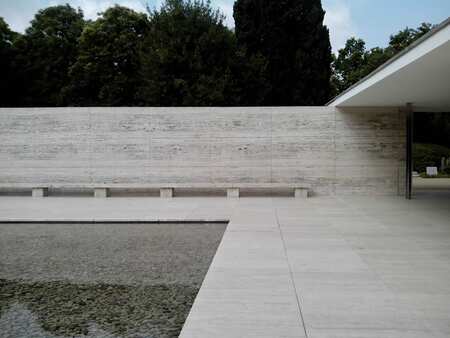
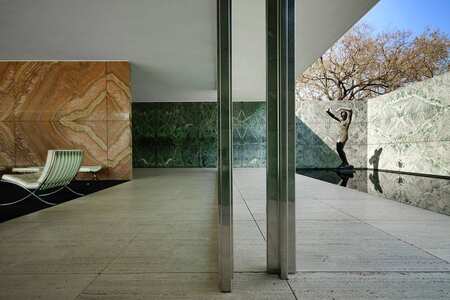
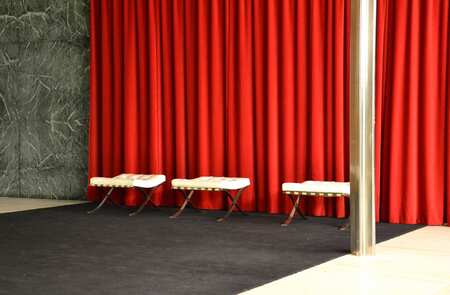
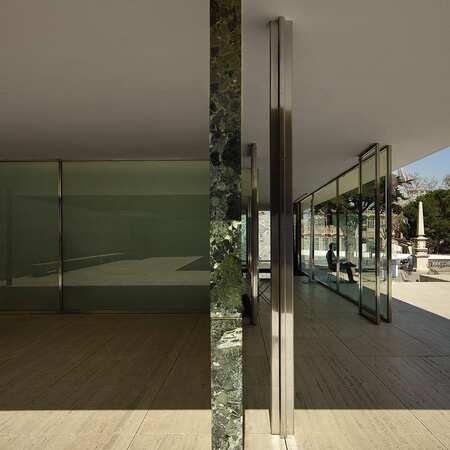
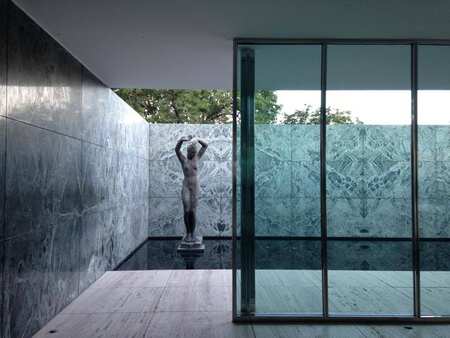
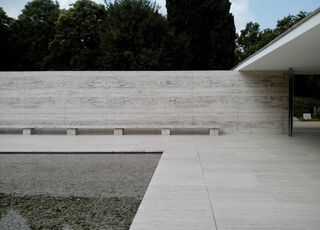

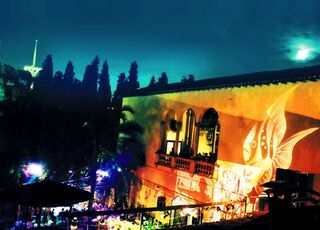


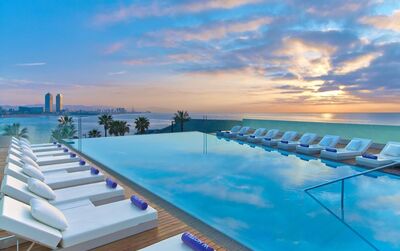
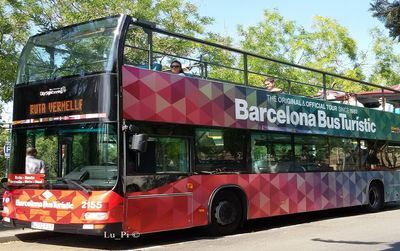
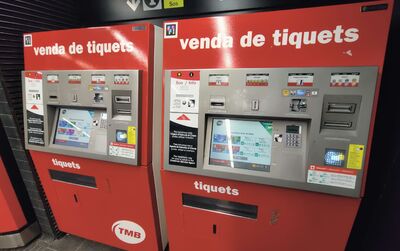
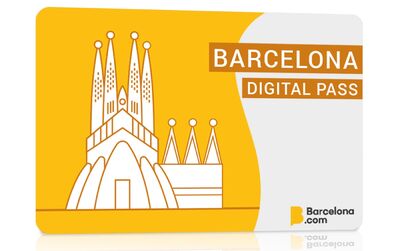
8 comments
not to be missed! - Betty (7 Sep 2023 - 16:40)
Lilly Reich's work is finally being recognised, the pavilion is as much her as Mies...
A must-see!
great architect - amber (12 May 2014 - 10:30)
Mies van der Rohe was really a master, a great place to visit to learn moree about the creator of the famous chair.
voilà un bien bel endroit - me (4 Jun 2011 - 18:20)
Comme tout les objets de Van de Rohe, ce lieu est simple et splendide.. à Voir.
barcelona chair - tito (16 Oct 2008 - 23:29)
thank you for this great Barcelona Chair.. never supplanted..
beautiful pavilion.. love design
mies van der Rohe - bt (10 Sep 2008 - 20:22)
great place.. do not miss... love barcelona chair as well
Mies van der Rohe Pavilion - menessie (9 Jun 2007 - 18:55)
Yes I've been there and it's beautiful and well worth a visit
mies van der rohe - pat (6 Jun 2007 - 02:01)
yes it's.. The Pavillon has been reconstructed like at the time of the exposition!
this - me (18 May 2007 - 23:06)
has anyone actaully been here? cuz the pic looks cool, but is the actual place?!?!